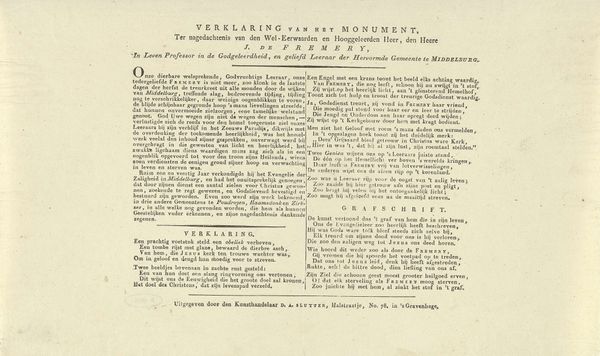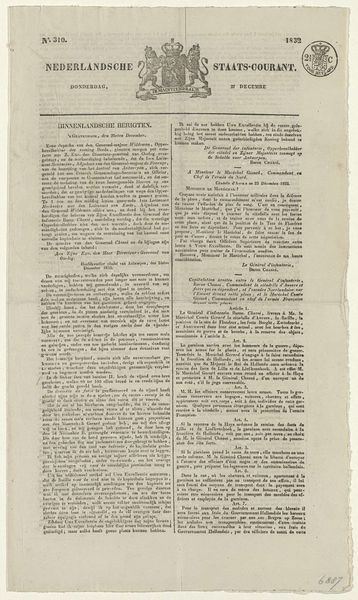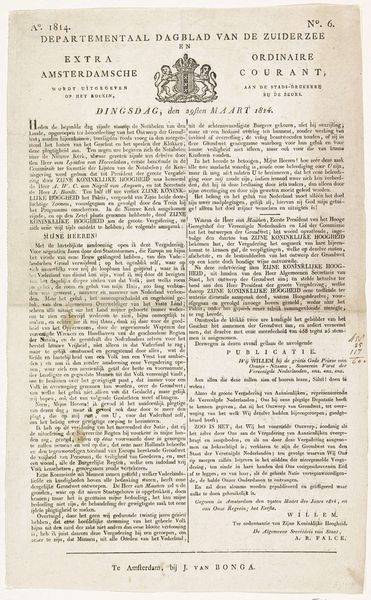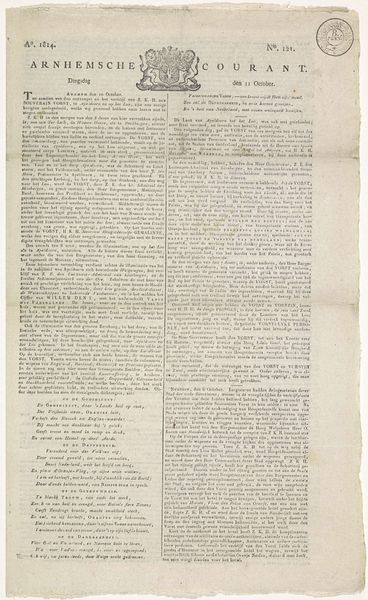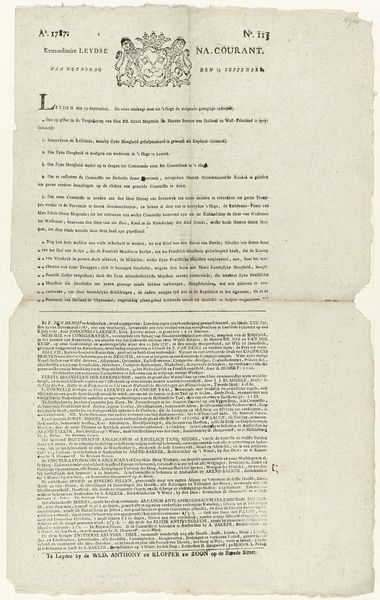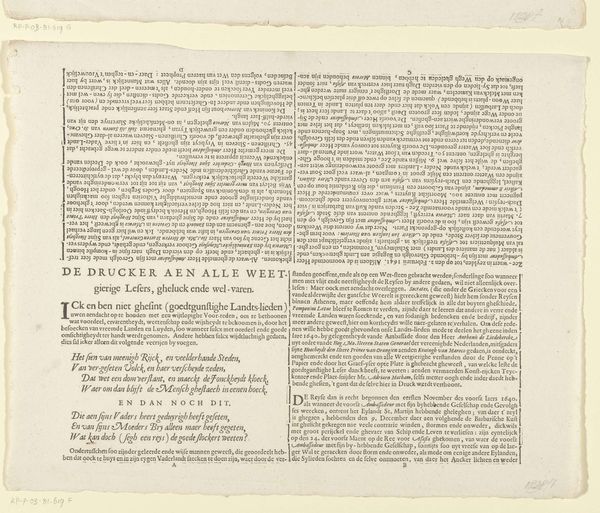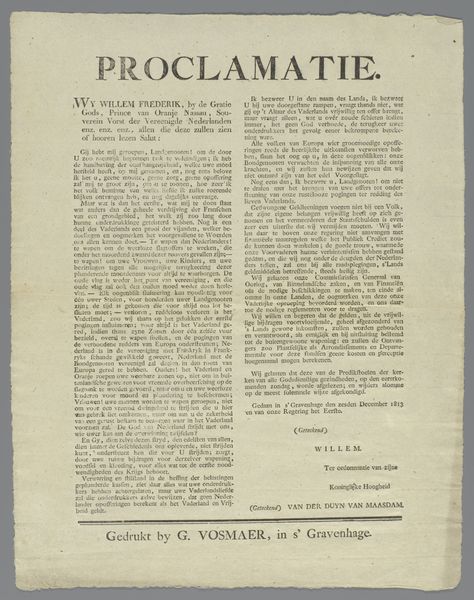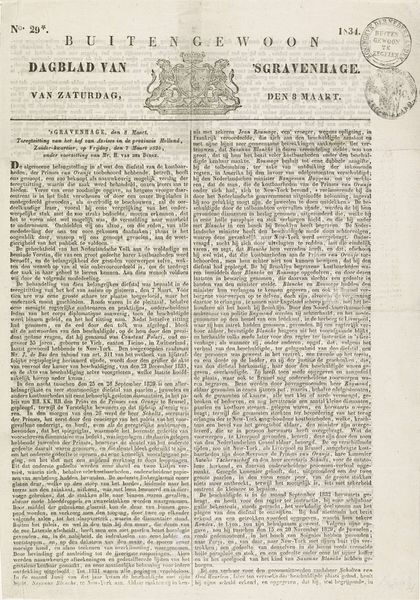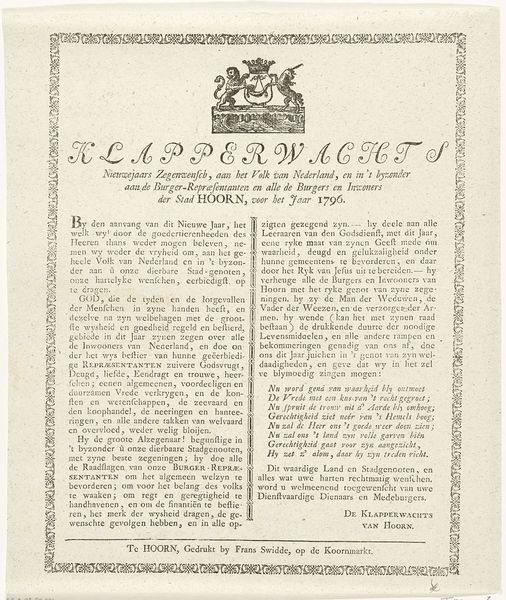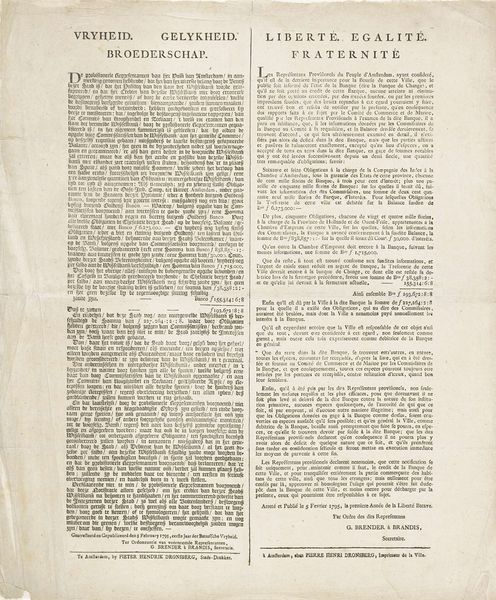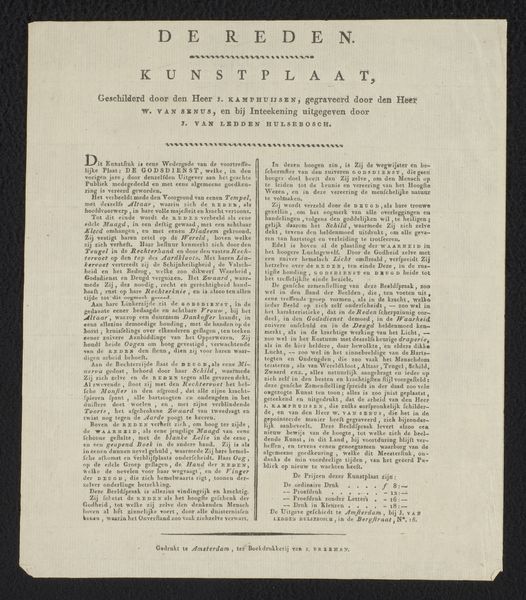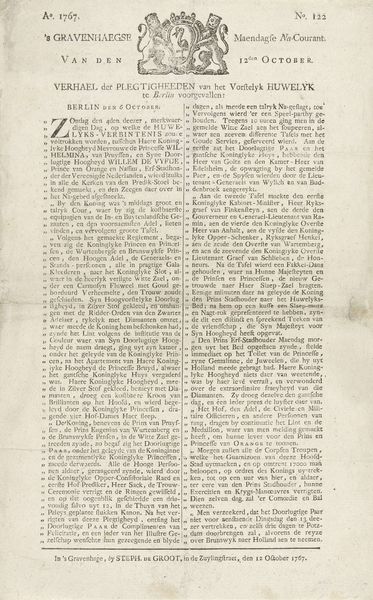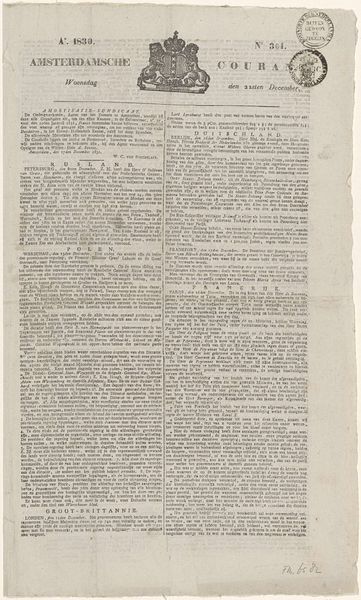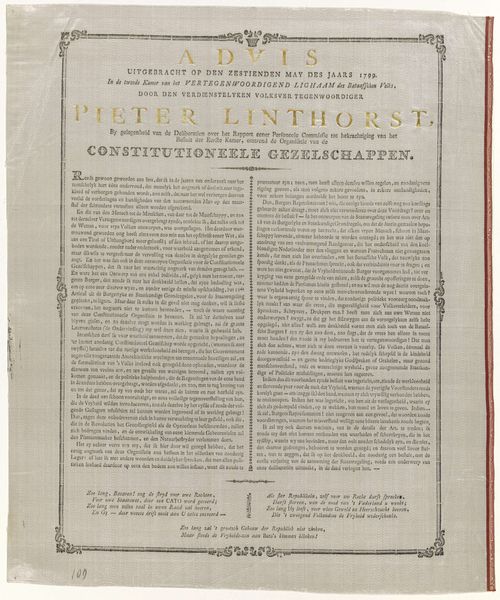
Verklaring bij de prent met de gedenkzuil bij 400-jarig jubileum uitvinding boekdrukkunst door Coster, 1823 1823
0:00
0:00
graphic-art, print, textile, paper, typography, poster
#
graphic-art
# print
#
textile
#
paper
#
typography
#
history-painting
#
poster
Dimensions: height 207 mm, width 332 mm
Copyright: Rijks Museum: Open Domain
Curator: This print, "Verklaring bij de prent met de gedenkzuil bij 400-jarig jubileum uitvinding boekdrukkunst door Coster, 1823" from D.A.M. Sluyter, is fascinating because it represents a specific moment of cultural nationalism. What are your initial thoughts on it? Editor: It's quite text-heavy and feels very formal, almost like an official announcement. It seems to be celebrating the 400th anniversary of the invention of printing, crediting Coster. How do you interpret this work in its historical context? Curator: Exactly! The print acts as propaganda. It's commemorating Laurens Janszoon Coster as the Dutch inventor of printing. However, we need to examine why this narrative was so important in 1823. This period was a crucial moment in constructing Dutch national identity. Questioning "who counts" in history becomes central. Can art shape history? Editor: That's interesting, I never thought of it that way. So, it's not just a straightforward historical document but also a constructed narrative used to bolster national pride. What elements contribute to this sense of national pride? Curator: Note how the text emphasizes Haarlem, Coster's city. It is specifically a regional figure becoming part of a bigger national story. Who benefited from that, do you think? It could even lead us to thinking about present-day issues around the definition of "Dutch identity". This work makes it very clear to examine critically what is being "celebrated," as well as what is conveniently ignored in this kind of messaging. Editor: So, the print isn't merely celebrating an invention; it's staking a claim and shaping a national narrative. This is helpful in recognizing how historical events, even technological innovations like the printing press, are tied to questions of nationalism and identity. Curator: Precisely. Recognizing the constructed nature of historical narratives, like this one celebrating Coster, helps us unpack the complexities of cultural identity formation, both then and now. Editor: That gives me a lot to think about in terms of the relationship between art, national identity, and historical narratives. Thanks for sharing your expertise!
Comments
No comments
Be the first to comment and join the conversation on the ultimate creative platform.
